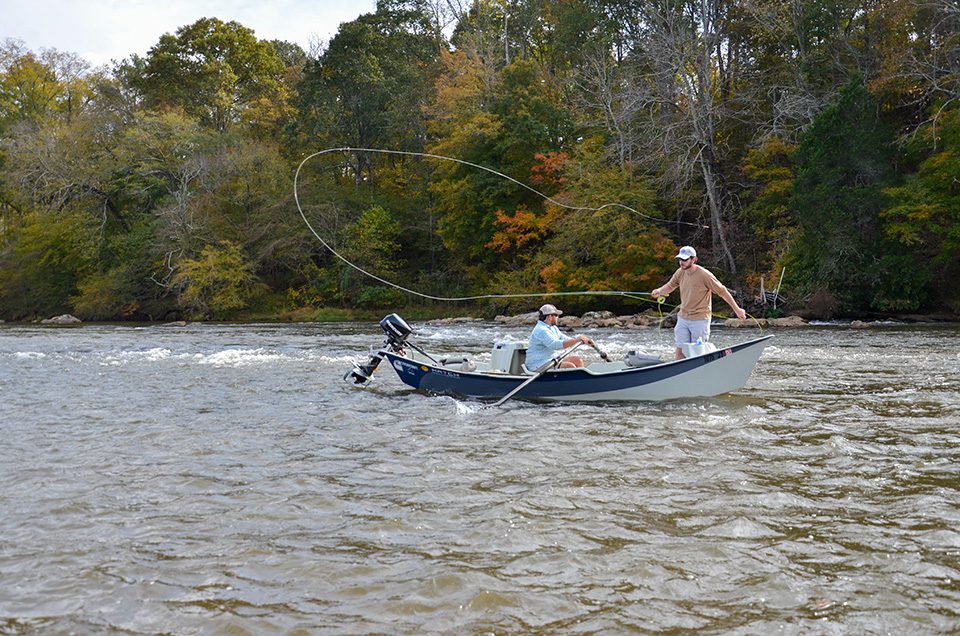By Nick Carter
With two anglers flailing away from either end of drift boat, there is huge potential for monumental foul-ups. A drift boat and a good oar-man can be flyfishers’ best friends, but there are some rules everyone must follow.
TEAMWORK: If both anglers and the rower work together, things tend to go much more smoothly.
The rower’s job is to position the boat so everyone is safe and the anglers have good casts to likely lies. He is the captain. For safety, the anglers must do what he says. If he is a hired guide, he should also know the river, which means he knows where fish hold. When he barks out, “long seam, river left!” he’s trying to help you catch fish. When he starts backstroking hard, be ready to cast. He’s seen something fishy.
The angler at the front of the boat is in the catbird seat. His only duties are to fish well and occasionally look up to monitor for danger. The oar-man can’t see through the angler standing in the front of the boat. If you’re up front and see an obstacle you suspect the rower doesn’t, let him know.
The angler in the rear is tasked with clean-up duty, and he’s also responsible for avoiding crossed lines. The front angler will be facing forward, which means he can’t see what’s going on in the boat. The rear angler must pay attention to what the rower and front angler are doing and adjust accordingly.
Paying attention also allows the rear angler to do his clean-up duty effectively. By watching the front angler, the back angler can fish the good water his buddy missed.
CASTING: Theoretically, if both anglers cast using the same angles, there should never be an issue with crossed lines. And, unless you’re streamer fishing, there isn’t a need to do a lot of false casting or even cast much at all.
One of the cool things about fishing from a drift boat is you’re floating along at the same speed as the river. Making a 45-degree cast upstream of the boat allows your fly line and the boat to float along together. If you’re diligent in mending the line, you can achieve an almost infinite drag-free drift. Look out ahead, pick a good line, cast, and drift away.
BOUNDARIES: Staying within the boundaries is important, especially when chunking and stripping streamers. It is hard not to aim and fire at the next good-looking run every time you finish a retrieve. Really, that’s what you should be doing… as long as you’re fishing within your boundaries.
The angler in the front of the boat gets everything from the rower forward. The rear angler gets everything from the rower back. Staying within the boundaries can avert a lot of frustration and time spent untangling lines or pulling hooks out of the rower’s face.
When you’re dealing with foul-ups, you’re not fishing. And when you’re not fishing, you’re floating past a lot of good water.
Nick Carter is author of “Flyfisher’s Guide to North Carolina & Georgia,” available on Amazon or by emailing the author at nsc8957@gmail.com.
